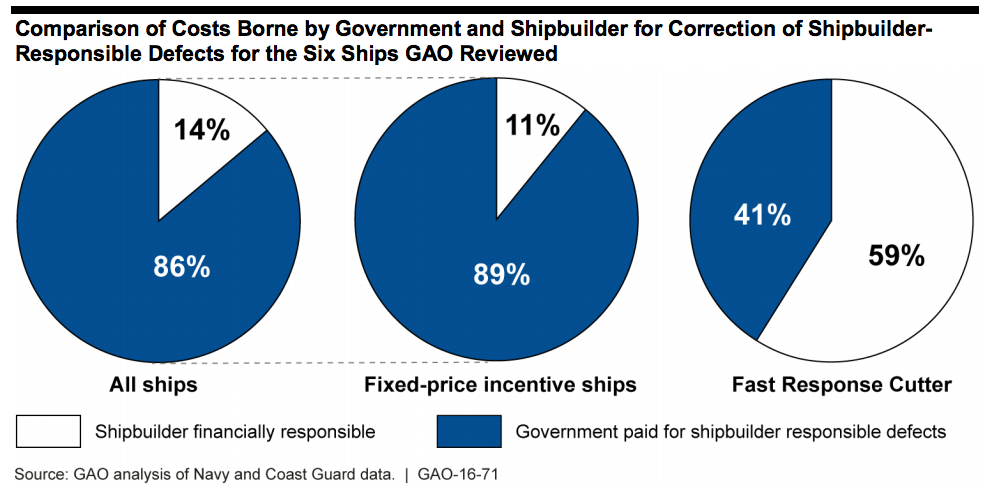The following is the Government Accountability Office report, Navy and Coast Guard Shipbuilding: Navy Should Reconsider Approach to Warranties for Correcting Construction Defects.
From the report:
What GAO Found
For five of the six Navy and Coast Guard ships GAO reviewed, guarantees did not help improve cost or quality outcomes. While the type and terms of each contract determine financial responsibility for correcting defects, the government,
in most of the cases GAO examined, paid shipbuilders to repair defects. For the four ships with fixed-price incentive type contracts and guarantee clauses, the government paid the shipbuilder 89 percent of the cost—including profit—to
correct these problems. This means the Navy and Coast Guard paid the shipbuilder to build the ship as part of the construction contract, and then paid the same shipbuilder again to repair the ship when defects were discovered after
delivery—essentially rewarding the shipbuilder for delivering a ship that needed additional work. Navy officials stated that this approach reduces the overall cost of purchasing ships; however, the Navy has no analysis that proves their point. In contrast, the warranty on another Coast Guard ship—the Fast Response Cutter (FRC)—improved cost and quality by requiring the shipbuilder to pay to repair defects. The Coast Guard paid upfront for the warranty, which amounted to 41 percent of the total defect correction costs. The figure below shows the amount, as a portion of the millions of dollars required to address defects, shipbuilders and the government paid to correct defects for the ships GAO reviewed and the difference in defect-correction arrangements.

Although the Federal Acquisition Regulation (FAR) and the Department of Defense guidance instruct programs to, respectively, consider and document the use of a warranty, the use of warranties is not mandatory, and the Navy does not consider using them for ship contracts. In contrast, the Coast Guard’s FRC warranty, as well as that planned for another upcoming ship class, fosters quality performance by following the FAR warranty provisions. The Navy may be missing opportunities for savings by not considering use of warranties. Further, the Navy has no stated objective for its guarantees, and guidance for contracting officers is minimal as to when or how to use a guaranty. While the FAR does not apply to guarantees, according to federal internal control standards, government programs require objectives and guidance to ensure that they achieve the desired results. Without a clear objective and guidance for using a guaranty and for determining when a warranty is appropriate in shipbuilding, Navy contracting officers do not have the information they need to make informed decisions regarding which mechanism is in the best interest of the taxpayer.





